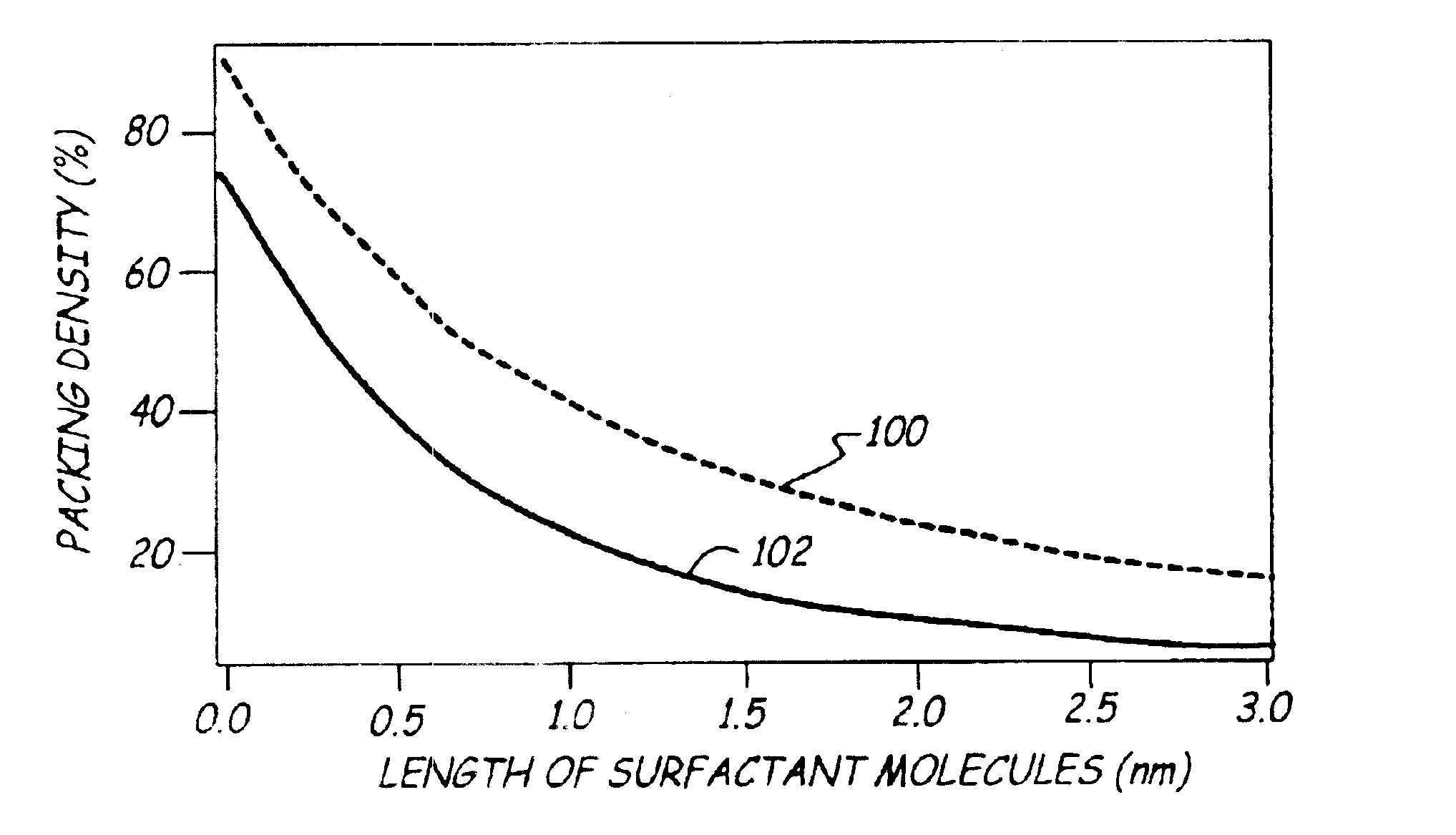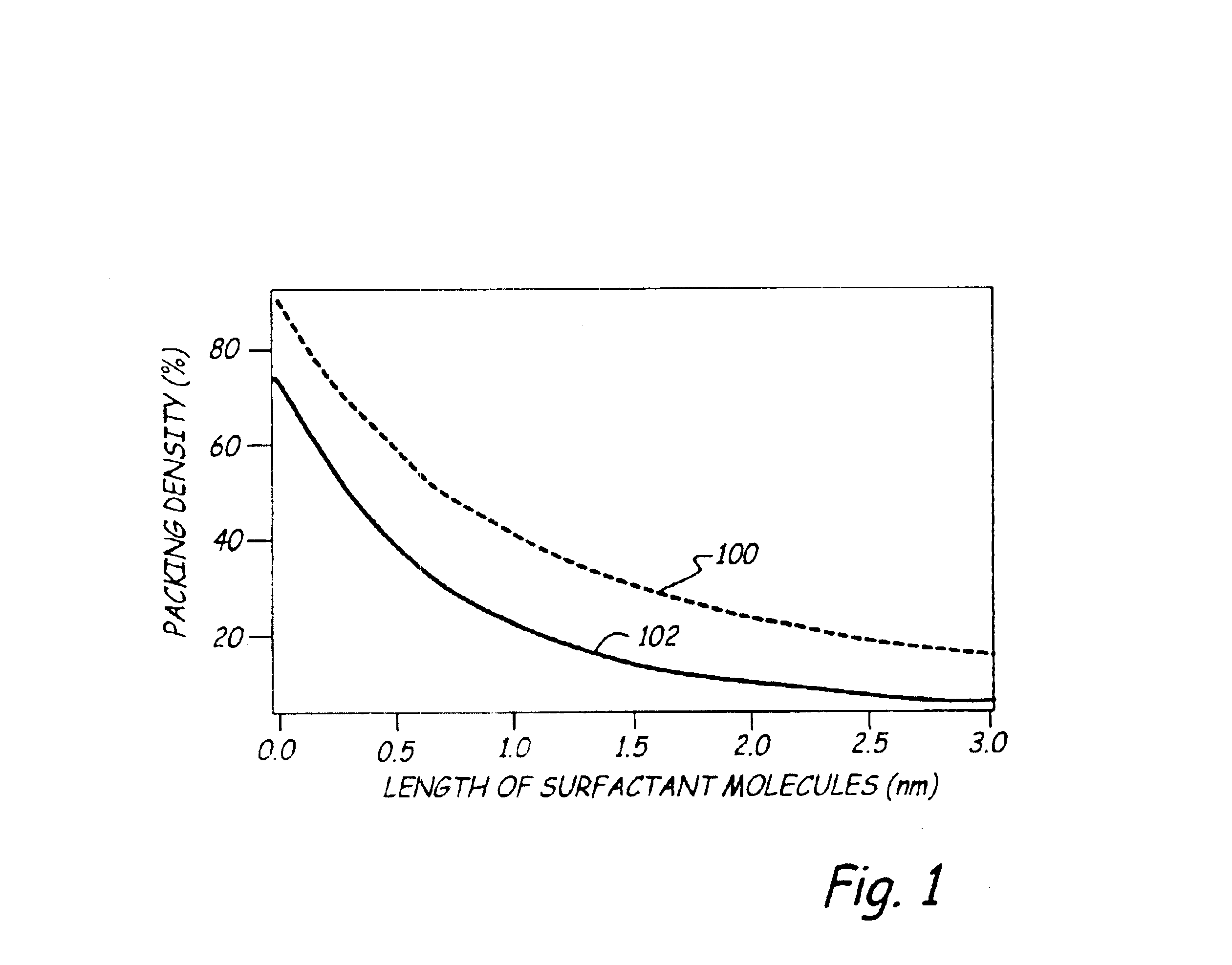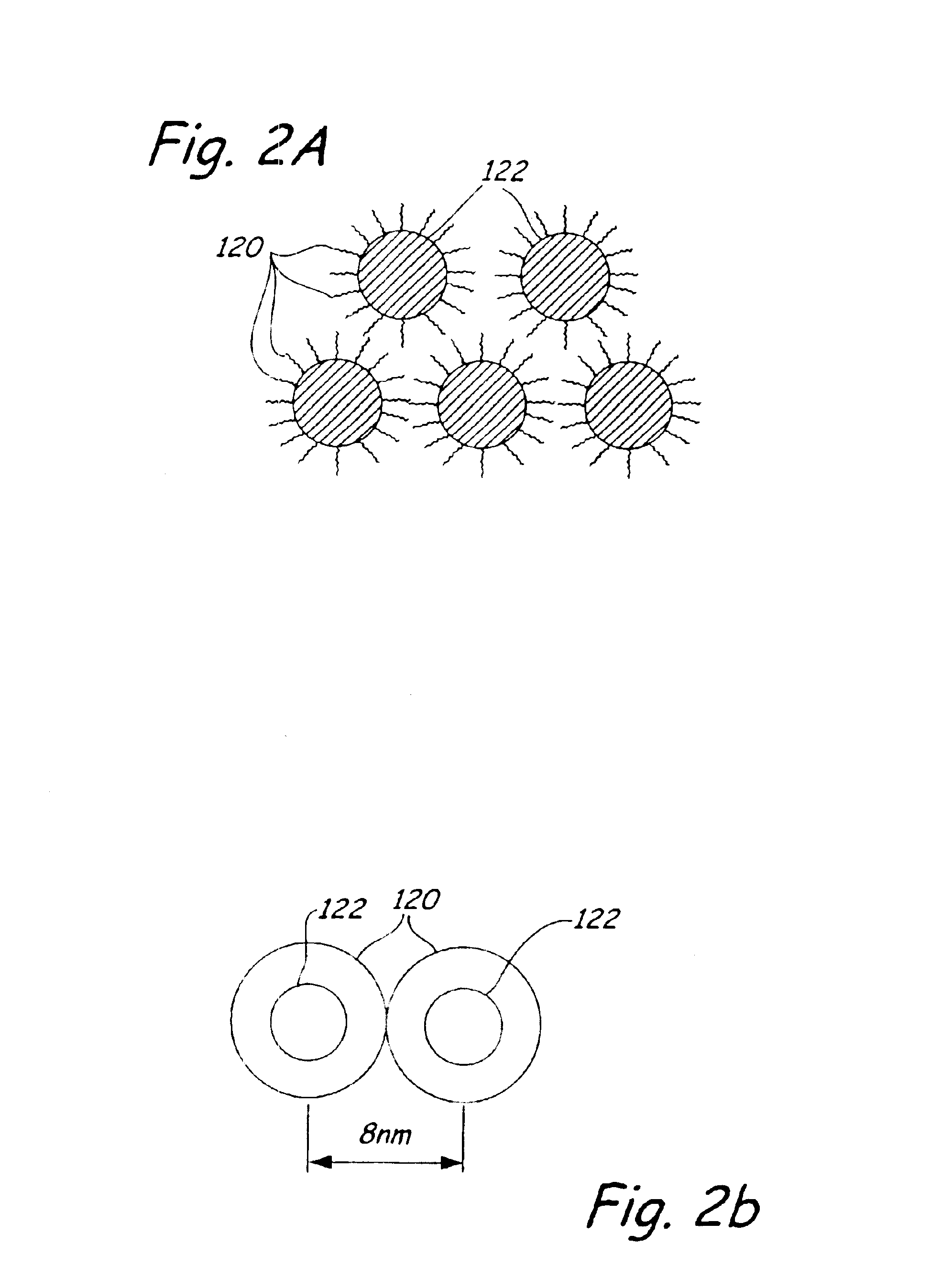Increased packing density in self-organized magnetic array
a magnetic array and self-organization technology, applied in the field of magnetic recording media, can solve the problems of thermal instability, limited scaling to a small grain size, and difficult to maintain the chemical stability of the material,
- Summary
- Abstract
- Description
- Claims
- Application Information
AI Technical Summary
Benefits of technology
Problems solved by technology
Method used
Image
Examples
Embodiment Construction
In order to achieve areal densities beyond 1 Terabit / in2, Self-Organized Magnetic Arrays (SOMA) have been proposed. The demonstration of the synthesis of monodispersed high anisotropy FePt nanoparticles with stable magnetization reversal transitions at room temperature has increased interest in the field. In forming such Self-Organized Magnetic Arrays, the FePt nanoparticles are coated by a layer of surfactant molecules such as oleic acid and oleylamine to prevent agglomeration. However, these surfactant molecules, while preventing agglomeration, are also a significant factor in defining and limiting the distance between adjacent nanoparticles. The inter-particle distance in an array of self-assembled particles is determined by the length of the surfactant molecules. Thus, the packing density of the molecules is also a function of the length of the surfactant chain. FIG. 1 is a graph of packing density in percent versus surfactant molecule length in nanometers as calculated for 4 nm...
PUM
| Property | Measurement | Unit |
|---|---|---|
| grain diameters | aaaaa | aaaaa |
| diameter | aaaaa | aaaaa |
| chain length | aaaaa | aaaaa |
Abstract
Description
Claims
Application Information
 Login to View More
Login to View More - R&D
- Intellectual Property
- Life Sciences
- Materials
- Tech Scout
- Unparalleled Data Quality
- Higher Quality Content
- 60% Fewer Hallucinations
Browse by: Latest US Patents, China's latest patents, Technical Efficacy Thesaurus, Application Domain, Technology Topic, Popular Technical Reports.
© 2025 PatSnap. All rights reserved.Legal|Privacy policy|Modern Slavery Act Transparency Statement|Sitemap|About US| Contact US: help@patsnap.com



